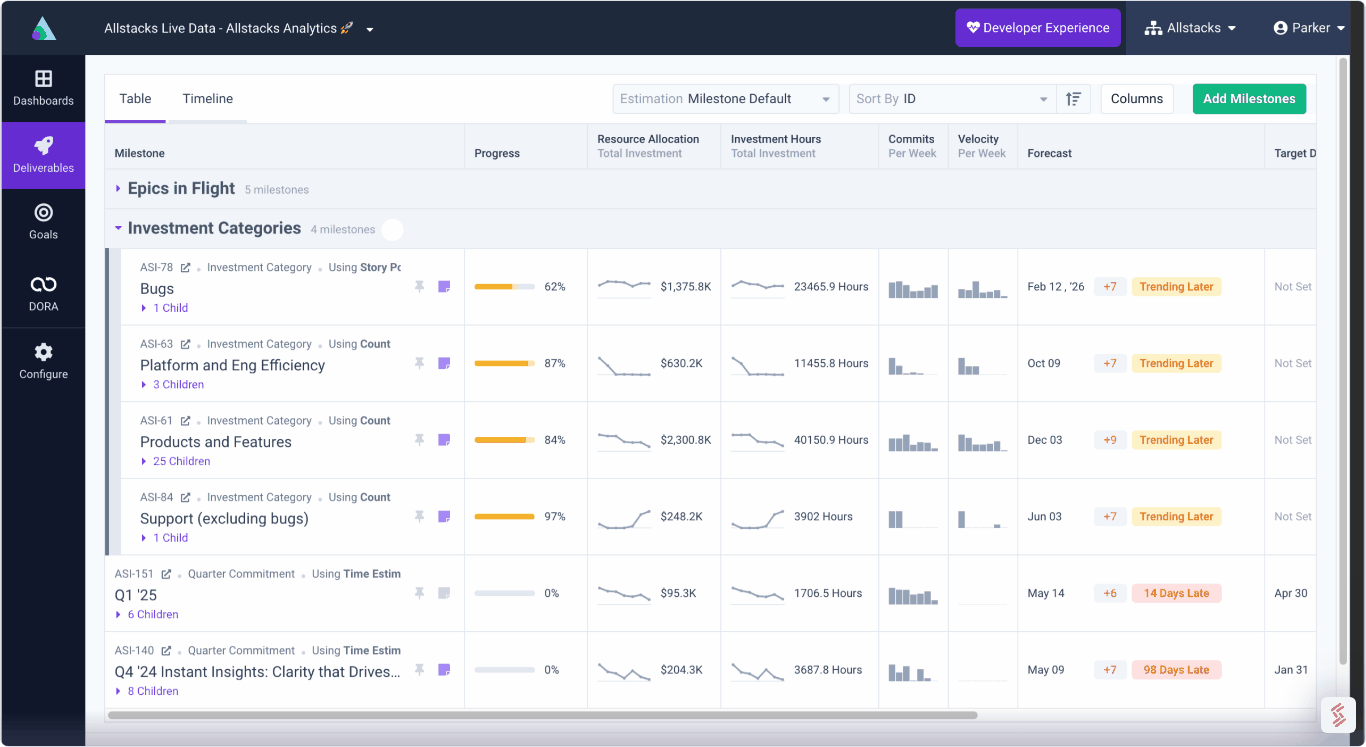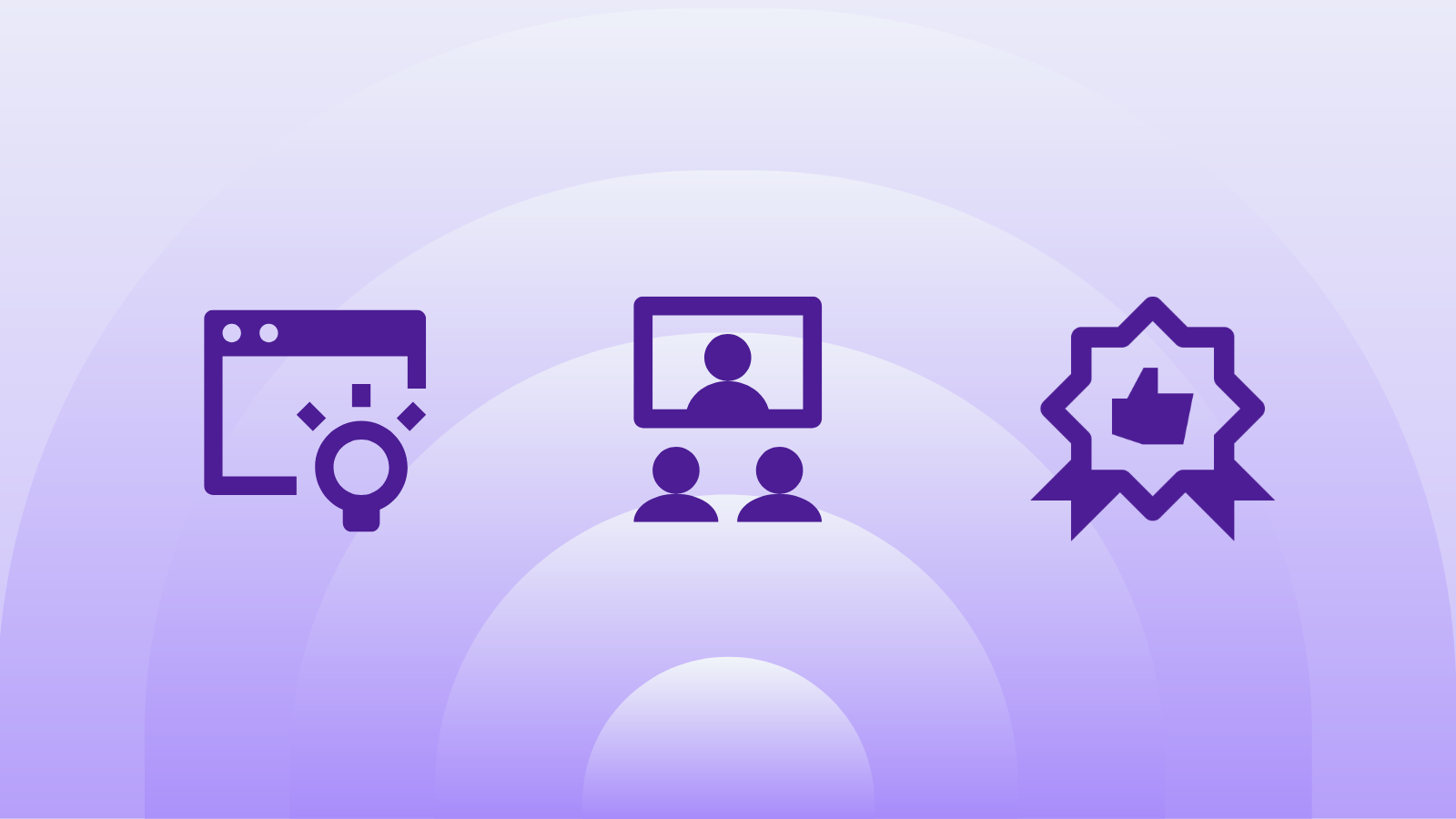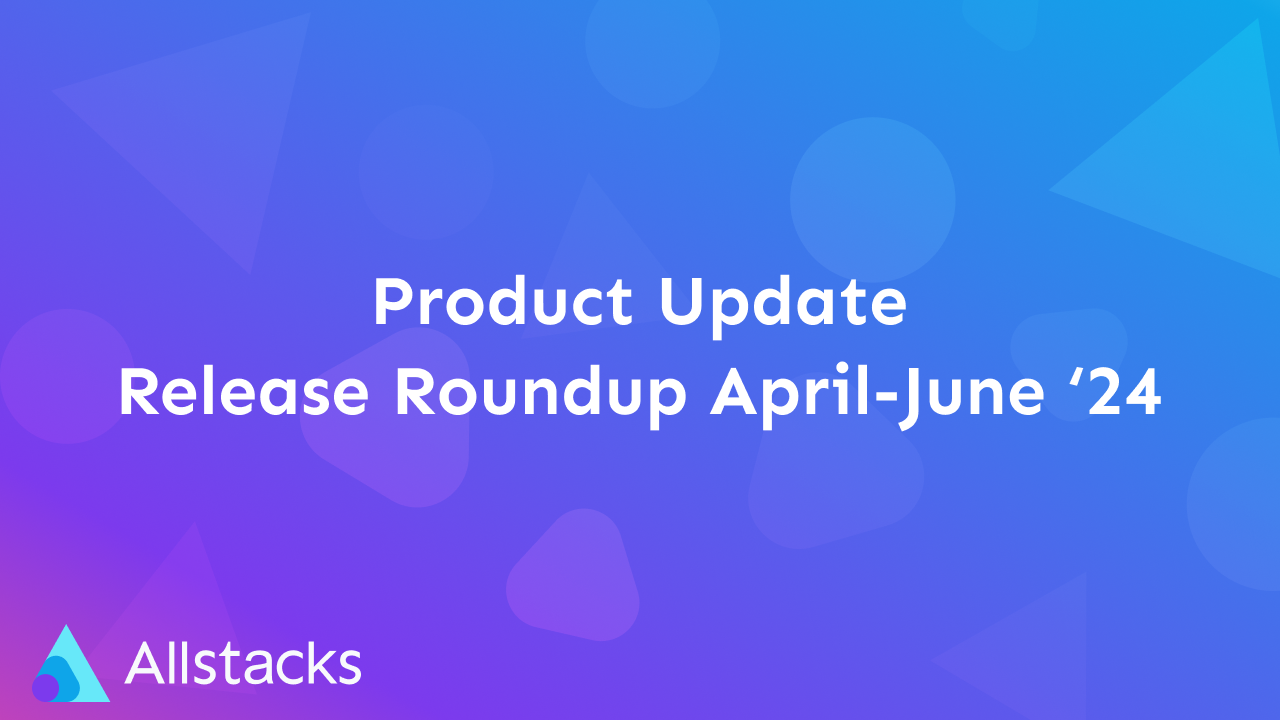.png)
Software Engineering Intelligence
-
Intelligence Engine
On-demand exhaustive AI-analysis
-
Engineering Investment
Complete visibility into time & dollars spent
-
360º Insights
Create meaningful reports and dashboards
-
Project Forecasting
Track and forecast all deliverables
DevEx
-
Developer Surveys
Create and share developer surveys
Software Capitalization
-
R&D Capitalization Reporting
Align and track development costs
Allstacks Release Roundup: What We Delivered in Q3 2024
At Allstacks, our mission is to empower engineering teams with actionable insights and the tools they need to succeed. In Q3, we rolled out a host of new features designed to make your workflows more efficient, your data more insightful, and your processes smoother. Here's a recap of our key accomplishments this past quarter.
.png)
What We Delivered in Q3
Enhancements to the Work Items Table (WIT)
In Q3, we introduced a series of powerful updates to the Work Items Table (WIT), making it an even more versatile tool for tracking and analyzing work across your teams.
New Chart Types and KPI Widgets
We added visualizations that can accompany Work Items Tables on dashboards, and added readability enhancements. Users can set a max number of series after which the rest of the data will be grouped into a composite series. Our new KPI widgets let teams track custom metrics like WIP limits, open high-priority bugs, and unestimated tickets. With thresholds and color-coded alerts, these widgets enable teams to monitor risks and trends in real time.

Parent Grouping and Custom Columns
A major enhancement brought to the WIT is the ability to group items by parent objects, unlocking new ways to analyze your data. Previously, the WIT returned sortable tables of individual results but didn’t show how those items related to larger parent initiatives or epics. Now, you can:
- Group tickets by parent to uncover trends like which initiatives are emitting high-priority bugs.
- Add custom columns to expose parent names and properties, enabling insights at a glance.
- Dynamically pivot data by any parent property and export the grouped table as a CSV for further analysis in tools like Excel or Google Sheets.
These updates make the WIT more than just a table—it’s now a dynamic tool for uncovering insights at both the micro and macro levels.

Workspace Navigation Improvements
We streamlined workspace navigation by allowing users to pin favorite workspaces to the top of their list. This quality-of-life improvement simplifies managing multiple workspaces.
Capitalization Reporting using Investment Hours
In Q3, we introduced the option to calculate Capitalization from our Investment Hours algorithm. This feature is transforming how organizations measure capitalization, obviating the need for time tracking and assembling reports manually.
This new iteration on capitalization reporting empowers users to:
- Export customized reports that include detailed columns on epics, initiatives, and tickets worked on during a given period.
- Choose between calculation methods, such as the classic velocity approach or our proprietary investment hours method, which estimates time based on contributors' actions in their daily tools (like code repositories and project management systems).
This automated method eliminates the need for manual timesheets, yet achieves a comparable level of accuracy—within 5% of traditional timesheet data, based on customer comparisons. It simplifies reporting while maintaining the fidelity required for financial reporting and decision-making.
Meeting Time Metrics
We introduced Meeting Time Metrics to help teams using Google Calendar understand how meetings impact productivity. These metrics track:
- Meeting time by contributor, offering a clear view of how much time is spent in meetings. This can be viewed at an individual level or aggregated to compare trends across multiple teams.
- Meeting time trends over time, providing insights into whether meeting overhead is increasing or decreasing.
With filtering options to exclude events like "Out of Office" or "Work Block," teams can focus on actionable insights and advocate for better time management practices.

We hope you enjoy these improvements! Our team has also been hard at work building two new game-changing features (expected to come out very soon!) that, when combined, provide unprecedented visibility into engineering team dynamics and performance. Keep an eye on the blog next week for more details 👀
As always,if you have questions about any Allstacks functionality, don’t hesitate to reach out to the Allstacks team.



